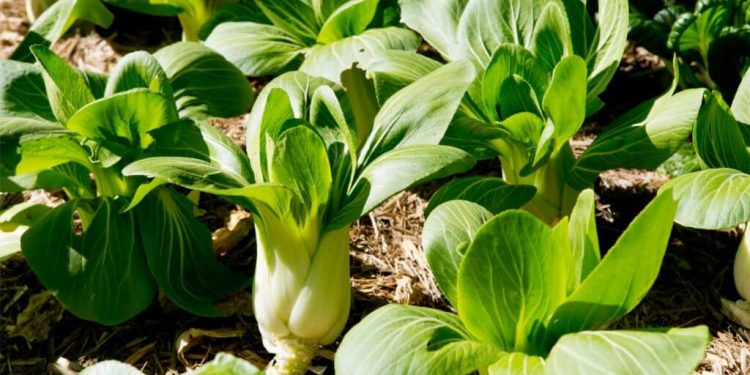#Hydroponics #PlantCultivation #Agriculture #Horticulture #HydroponicSystems #LeafyGreens #Herbs #NutrientSolutions #PlantAdaptation #Gardening
Hydroponics, the method of cultivating plants using water and nutrient solutions, has garnered attention across various fields, from agriculture to horticulture. While it might sound complex or expensive, hydroponics doesn’t have to be either. Whether you’re a farmer, agronomist, agricultural engineer, farm owner, or scientist, the world of hydroponics offers innovative opportunities. Small hydroponic kits can be set up at home, or you can design your own system using pipes and LED lights. While nearly all plants can flourish in hydroponic systems, certain species truly excel. Join us as we delve into the realm of hydroponics and explore the top 10 best plants for these systems.
Basil: Aromatic and Versatile Basil, belonging to the Lamiaceae family, ranks among the finest plants for hydroponics. With its sweet aroma and flavorful leaves, basil is a culinary treasure. Varieties like sweet basil, Thai basil, and lemon basil offer diverse flavors. This rapid-growing herb thrives in various conditions, adapting well to hydroponic environments. It can even flourish without soil, provided it receives ample nutrients and light.
Lettuce: Leafy and Low-Maintenance Lettuce, a member of the Asteraceae family, stands as a prime choice for hydroponic growth. Its various sizes, colors, and shapes make it a versatile addition to any hydroponic system. Lettuce is a cool-season annual commonly used in salads. Its rich history dates back to ancient Egypt, where it was cultivated. With over a hundred varieties available, lettuce offers an array of options for hydroponic enthusiasts.
Strawberry: Sweet Delights Strawberries might not be the first plants that come to mind for hydroponics, but their spreading nature and hanging growth make them excellent candidates. Hydroponically grown strawberries can be more challenging and time-consuming than lettuce or basil, but their sweet, bright red fruits are worth the effort. Rich in Vitamin C and manganese, strawberries offer both flavor and nutrition.
Mint: Fragrant and Prolific Mint, with around 20 recognized species, is a fragrant addition to hydroponic setups. Its aromatic leaves come in various shades of green, purple, and blue, depending on the variety. Mint’s quick-spreading nature requires careful management, but its delightful scent and multiple culinary uses make it a hydroponic gem.
Spinach: Nutritious and Fast-Growing Spinach, a cool-weather leafy green from the Amaranthaceae family, mirrors lettuce in hydroponic cultivation. However, it’s more sensitive to high heat and intense light, which can lead to flowering and bitter leaves. With its origins in central and Western Asia, spinach offers high nutritional value and versatility in the kitchen.
Kale: Nutrient-Rich and Robust Kale, known for its curly leaves, is a nutrient powerhouse that flourishes in hydroponic systems. Its variations include green and purple leaves, making it a striking addition. With its resilience to frost and ability to thrive in low temperatures, kale is an ideal hydroponic candidate.
Bok Choy: Crunchy and Flavorful Bok choy, a cool-weather Chinese cabbage, is adaptable to hydroponic growth. Its sweet and mild flavor, resembling a blend of spinach and water chestnut, makes it a versatile ingredient. The rapid growth of bok choy suits hydroponic cultivation, especially in vertical systems.
Tomato: A Hydroponic Classic Tomatoes, often associated with soil gardening, thrive in hydroponic systems as well. Compact or dwarf tomato varieties are particularly suitable for hydroponics. With a variety of colors and sizes available, hydroponically grown tomatoes offer freshness at your fingertips.
Arugula: Long and Unique Leaves Arugula, recognized for its elongated leaves, is a flavorful addition to hydroponic gardens. Its distinctive peppery taste and slender leaves make it a sought-after ingredient in salads and garnishes. Arugula’s quick growth cycle and adaptability to hydroponic conditions make it a rewarding choice.
Jalapeños: Spicy and Rewarding Jalapeños, renowned for their medium heat, can thrive in hydroponic setups if provided with the right light and warmth. These pepper plants require proper air circulation to prevent mold. While growing jalapeños hydroponically might require some additional care, the spicy rewards are well worth it.
In the realm of hydroponics, these top 10 plants stand out for their adaptability, growth rate, and culinary appeal. Whether you’re a seasoned farmer, a curious scientist, or an agricultural enthusiast, exploring hydroponics can lead to a fresh and exciting approach to cultivating plants.
Tags: Hydroponics, Plant Cultivation, Agriculture, Horticulture, Hydroponic Systems, Leafy Greens, Herbs, Nutrient Solutions, Plant Adaptation, Gardening











